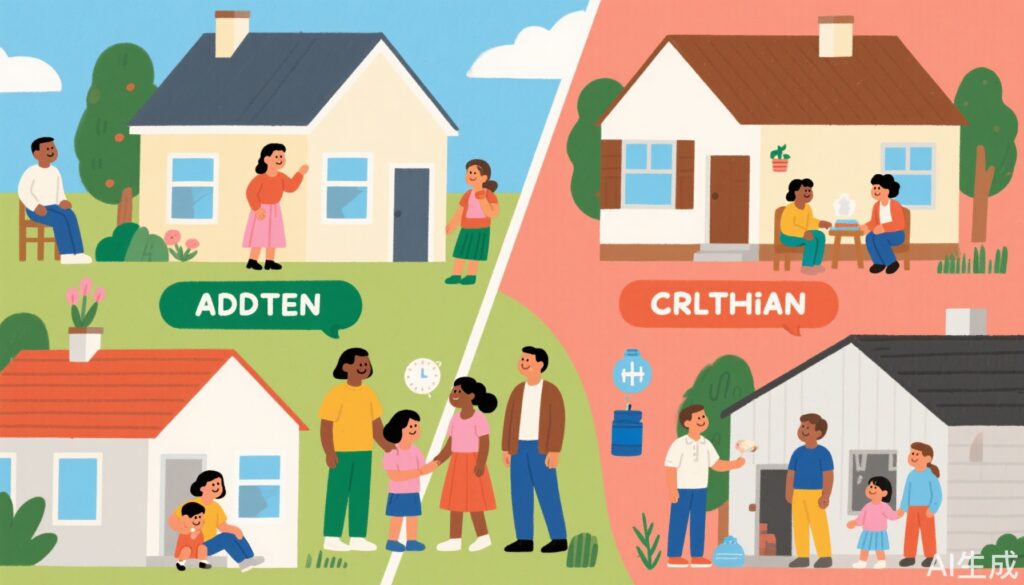Introduction: The Crucial Link Between Housing and Health
Housing and health are intimately connected—a fact recognized for over a century. An editorial in The Lancet highlights that unhealthy housing conditions correlate strongly with poor health outcomes. Despite abundant evidence, improving housing remains a low priority in public and global health agendas. Adequate and reliable housing supports continuous care and empowers individuals to prioritize their and their families’ health and well-being.
Historical Perspective and Human Rights
This connection is not a new discovery. As early as 1922, The Lancet published an article emphasizing the importance of housing factors in health, noting that science and common sense recognize this significance. Access to appropriate housing is legally protected as a fundamental human right. Yet, millions continue to live in unhealthy environments. According to the United Nations Statistics Division, over one billion people lived in urban slums or similar settings in 2022, a number expected to triple by 2050.
Global Housing Deficits and Sustainable Development Goals
The World Bank’s Adequate Housing Index reveals stark disparities: one-third of homes in emerging economies fail to meet adequate standards. The urgency of Sustainable Development Goal 11.1—to ensure access to adequate, safe, and affordable housing and basic services for all by 2030—is clear, but current progress is insufficient.
Health Risks of Poor Housing Conditions
Systematic reviews indicate that housing renovations incorporating proper ventilation, humidity control, heating-cooling systems, and insulation reduce exposure to dampness, mold, indoor air pollution, and extreme temperatures. These improvements lower risks of respiratory diseases, cardiovascular conditions, cancers, and mental health disorders. Poor housing also exacerbates health inequities linked to gender, ethnicity, socioeconomic status, and disability.
Examples of Housing-Health Challenges Worldwide
Poor housing is not confined to low-income countries. In Belgium, from 1991 to 2020, nearly 20% of deaths were associated with inadequate housing. Vulnerable populations suffer disproportionately. In Canada’s remote northern region of Nunavut, 53% of Inuit people lived in overcrowded conditions in 2021, with some eight-person families sharing two-bedroom homes.
International Guidelines and Governmental Inaction
The World Health Organization’s Housing and Health Guidelines advocate for securing adequate housing rights to improve population health. Yet, many governments delay action. High costs and long-term commitments required for safe housing construction and maintenance, coupled with poor data availability and political will, hinder progress.
Successful Models and Public Health Benefits
Countries prioritizing housing have seen rapid, profound benefits. Finland’s “Housing First” initiative provides small apartments with ongoing maintenance to individuals facing economic hardship, mental health challenges, and addiction. Between 2008 and 2020, this program reduced chronic homelessness by 71%, decreased emergency visits and hospital admissions, and shortened hospital stays.
Rights-Based Approaches and Urgent Calls for Action
Long-term investment in housing is an effective public health intervention grounded in human rights principles. In August 2023, the UN Special Rapporteur called for urgent measures to address homelessness and inadequate housing globally, emphasizing comprehensive policies, increased funding, and people-centered approaches.
Cross-Sector Collaboration and Policy Implications
Building collaboration among public health, healthcare, housing, and community organizations is essential. Policymakers must recognize adequate housing as a key social determinant of health and a core public health strategy.
The Role of Health Professionals
Health professionals play a vital role. While screening tools exist to identify housing instability, tools specifically targeting poor housing conditions are lacking. Developing such strategies will enable providers to assess housing alongside other health determinants like smoking and substance abuse and connect patients with appropriate resources.
Looking Ahead: The Growing Need for Adequate Housing
As urban populations more than double by 2050, combined with rising housing costs, climate change, social conflicts, and frequent natural disasters, demand for adequate housing will surge, worsening health inequities. Prioritizing housing in public health interventions not only offers critical opportunities to improve conditions but is also a moral imperative. The health of our communities depends on it.



